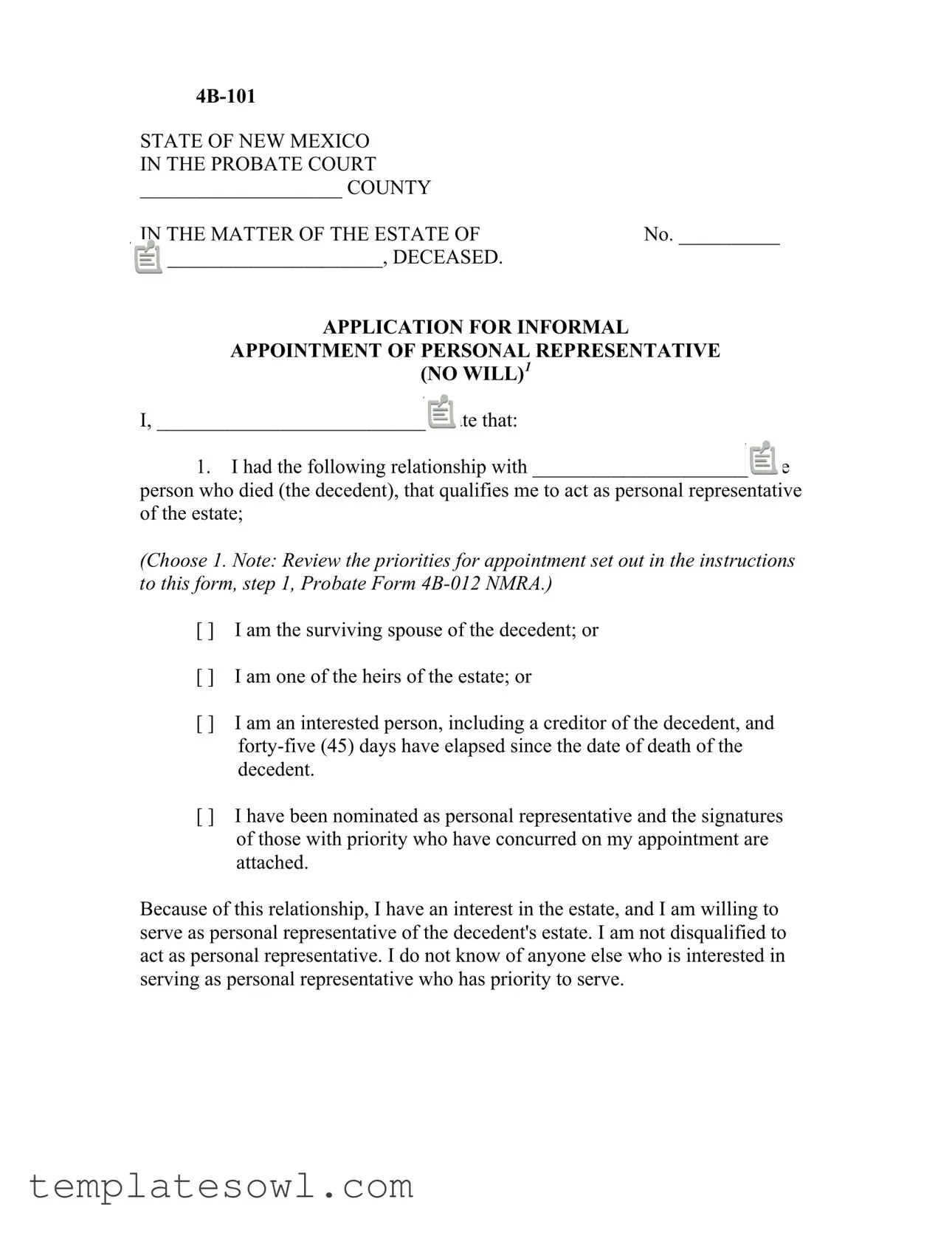SIGNED AND SWORN TO before me this ____ day of ________________,
_______ by _________________________.
|
___________________________ |
|
Notary Public |
(Seal) |
My commission expires: |
|
______________________ |
(If anyone has an equal or higher priority than you for appointment as personal representative, as discussed in the instructions for this form, step 1, have each sign below to show that person's consent to your serving as personal representative.)
I consent to the appointment of the personal representative listed above. 
Name: ____________________________________
Signature: _________________________________
Relationship to decedent: _____________________
Street Address: _____________________________
City, state and zip code: ______________________
Name: ____________________________________
Signature: _________________________________
Relationship to decedent: _____________________
Street Address: _____________________________
City, state and zip code: ______________________
Name: ____________________________________
Signature: _________________________________
Relationship to decedent: _____________________
Street Address: _____________________________
City, state and zip code: ______________________
Name: ____________________________________
Signature: _________________________________
Relationship to decedent: _____________________
Street Address: ____________________________
City, state and zip code: ______________________
USE NOTE
1.See Section 45-3-203 NMSA 1978 for priority among persons seeking appointment as personal representative and Section 45-3-301 NMSA 1978 for informal appointment of a personal representative.
2.If the applicant is an “heir”, as defined in 4B-002 NMRA, use the bracketed language.



 At death, the decedent
At death, the decedent  County, State of __________________ and owned property in _______________
County, State of __________________ and owned property in _______________ County, New Mexico.
County, New Mexico. 3. I have carefully searched for all of the names and addresses of the decedent’s spouse, children and other heirs [including myself]. I have discovered the following information:
3. I have carefully searched for all of the names and addresses of the decedent’s spouse, children and other heirs [including myself]. I have discovered the following information:


